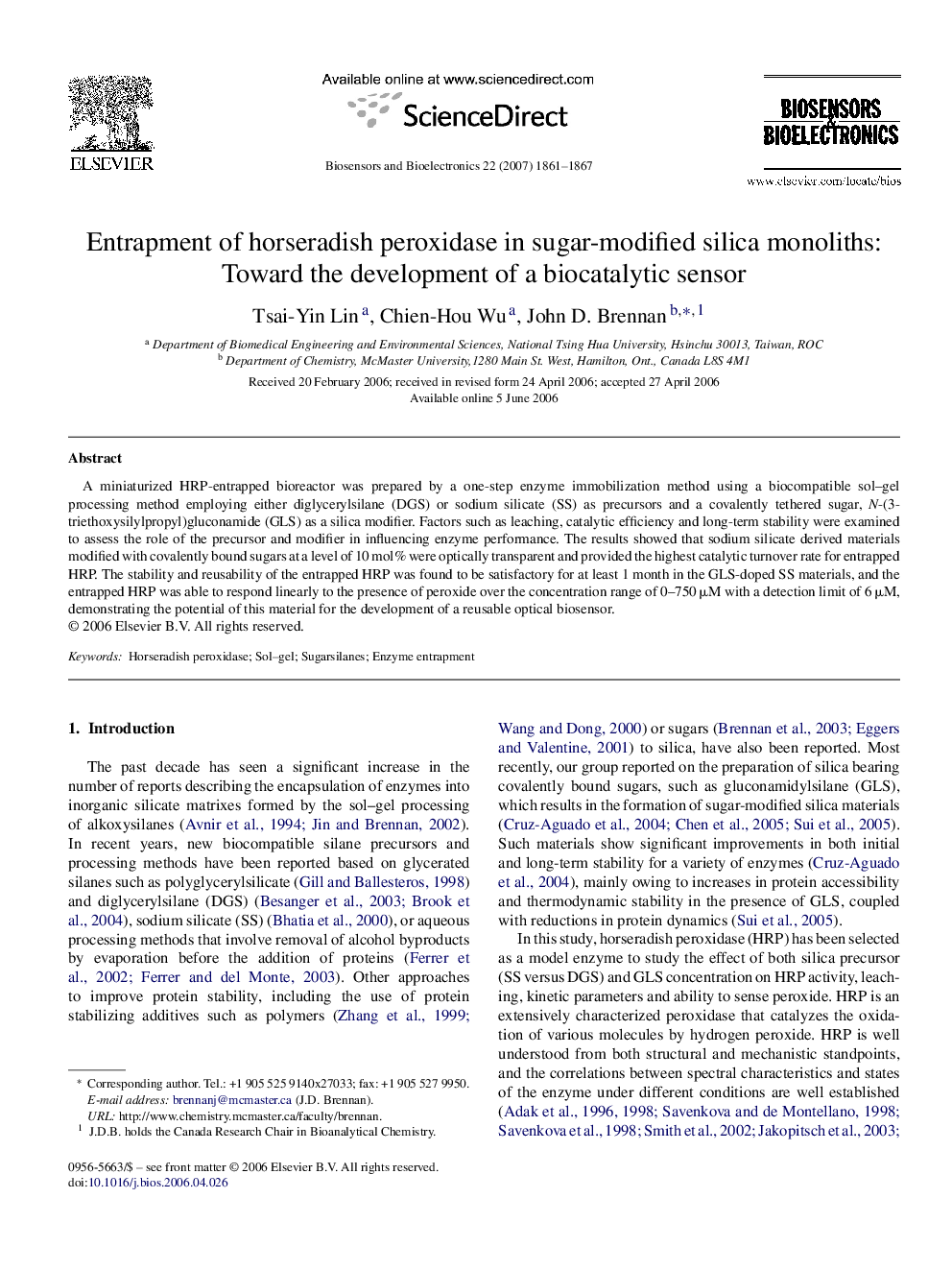| Article ID | Journal | Published Year | Pages | File Type |
|---|---|---|---|---|
| 870277 | Biosensors and Bioelectronics | 2007 | 7 Pages |
A miniaturized HRP-entrapped bioreactor was prepared by a one-step enzyme immobilization method using a biocompatible sol–gel processing method employing either diglycerylsilane (DGS) or sodium silicate (SS) as precursors and a covalently tethered sugar, N-(3-triethoxysilylpropyl)gluconamide (GLS) as a silica modifier. Factors such as leaching, catalytic efficiency and long-term stability were examined to assess the role of the precursor and modifier in influencing enzyme performance. The results showed that sodium silicate derived materials modified with covalently bound sugars at a level of 10 mol% were optically transparent and provided the highest catalytic turnover rate for entrapped HRP. The stability and reusability of the entrapped HRP was found to be satisfactory for at least 1 month in the GLS-doped SS materials, and the entrapped HRP was able to respond linearly to the presence of peroxide over the concentration range of 0–750 μM with a detection limit of 6 μM, demonstrating the potential of this material for the development of a reusable optical biosensor.
